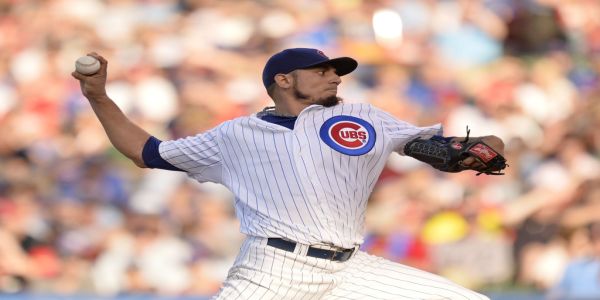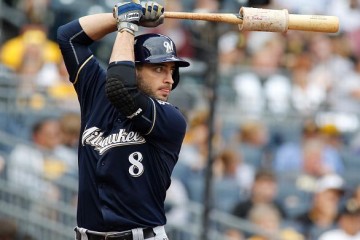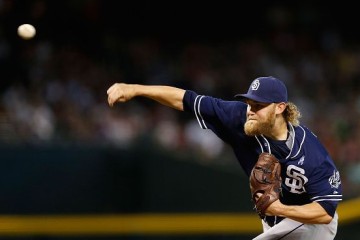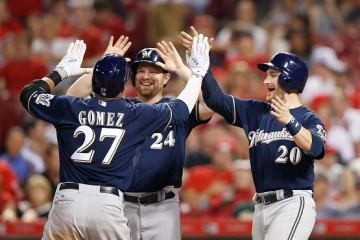2013 Fantasy Baseball, Trade Coverage: Matt Garza to the Rangers

Any time a player gets dealt, the obvious reaction is to talk about how the deal affects his fantasy value. But the factors that affect his fantasy value don’t really have anything to do with Garza. The new ballpark and new team compared to the old ballpark and old team are really the only things that change along with the move to the AL. Garza is still Garza. But the team is obviously better. Wins are dumb, but they still count. You can project Garza for an extra win or two from here on out. But the ballpark is worse. Rangers Ballpark in Arlington is a more homer friendly park than Wrigley Field to both left and right handed hitters. And just on a basic park factor level, Garza is going from bad to worse as Wrigley ranks as the 6th worst park for pitchers according to Fangraphs and Rangers Ballpark is only better than Coors Field. The move to the AL hurts, but we’re probably talking about a difference of 5-8 strikeouts over the rest of the season. It’s not a huge deal. At best the extra win or two makes for a wash with the tougher home ballpark and move to the AL. But at worse it negatively impacts his value. But ultimately not so much that you should be looking to deal him as a result of the trade.
What this trade should really prompt is just a look at how good Matt Garza is right now. To figure out how good he is, we need some context of how good he has been. He was remarkably healthy from 2008 to 20011, making at least 30 starts in each year. He peaked in 2011 with a 3.32 ERA, a 3.31 SIERA to back it up, and career highs in K%, swinging strike rate, and the percentage of balls outside the zone on which he induced a swing (O-Swing%). Aside from that he has been good but not great. He posted ERAs of 3.95, 3.91 and 3.91 in 2009, 2010, and 2012, respectively. He has about an average walk rate so he maintains a respectable WHIP around 1.25.
But this season he has been pitching more like it is 2011 as opposed to 2009, 2010 or 2012. He currently has a 3.17 ERA and 1.14 WHIP. But the problem is that his success isn’t backed up like his success was in 2011. He has a 3.80 SIERA and 3.85 xFIP, which are more consistent with him being a 3.90 ERA pitcher as he has so often been. And his strikeout rate is 2% lower than it was in 2011 as is his swinging strike rate. And his O-Swing% is more in line with his average years than his best year. His success is based on a .266 BABIP that is about 20 points lower than his career average. And given that he’s allowing line drives at a rate that is about 2% higher than his career line drive rate, it’s reasonable to assume that his BABIP shouldn’t be that low. Moreover, his infield fly ball rate is at an all time low. That BABIP is coming up. His strand rate is also about 6.5% higher than his career average. Some regression should be expected there as well.
Ultimately, you should be probably be trying to sell high on Garza. Not because this trade has a ton of impact on his value but because his results have been better than his skills.
As for what the Cubs are getting back, it looks like it is Mike Olt, C.J. Edwards and Justin Grimm per the latest tweet from Jeff Passan as of this writing. I’m a Rangers fan so I’ve seen Olt and Grimm. I’m no scout, but I can tell you I’ve been wildly unimpressed by what I’ve seen from Olt. His plate discipline is blatantly bad, and the numbers indicate that it’s not getting better. He struck out a quarter of the time in AA in 2012, a third of the time in 40 PA at the big league level last year and has struck out about a third of the time so far this season in AAA. The Rangers previously traded away a corner prospect with power to spare and plate discipline issues, and that came back to haunt them. But that’s the exception, not the rule. I saw Grimm twice last year in Frisco, and liked what I saw. But ultimately Grimm doesn’t have the strikeout ability to be anything but a mid-to-back of the rotation starter. He’s shown below average strikeout skills above AA, and while he still has room to improve, it seems unlikely that he’s going to turn into an above average strikeout pitcher. Edwards, the Rangers 48th round pick in 2011 out of high school, potentially has the most upside of the trio as he has struck out over 30% of the batters he has faced in 31 starts between rookie ball, low A and A ball.
In terms of real baseball, this is probably good for both teams. The Cubs continue to add depth to their farm system, and the Rangers get an upgrade in the rotation for three guys that were not their very best prospects. Sure, Garza may be in line for some regression, but he’s a better option than continuing to run Grimm out there while in the thick of a playoff race. All in all, feels like a win-win for both teams.




